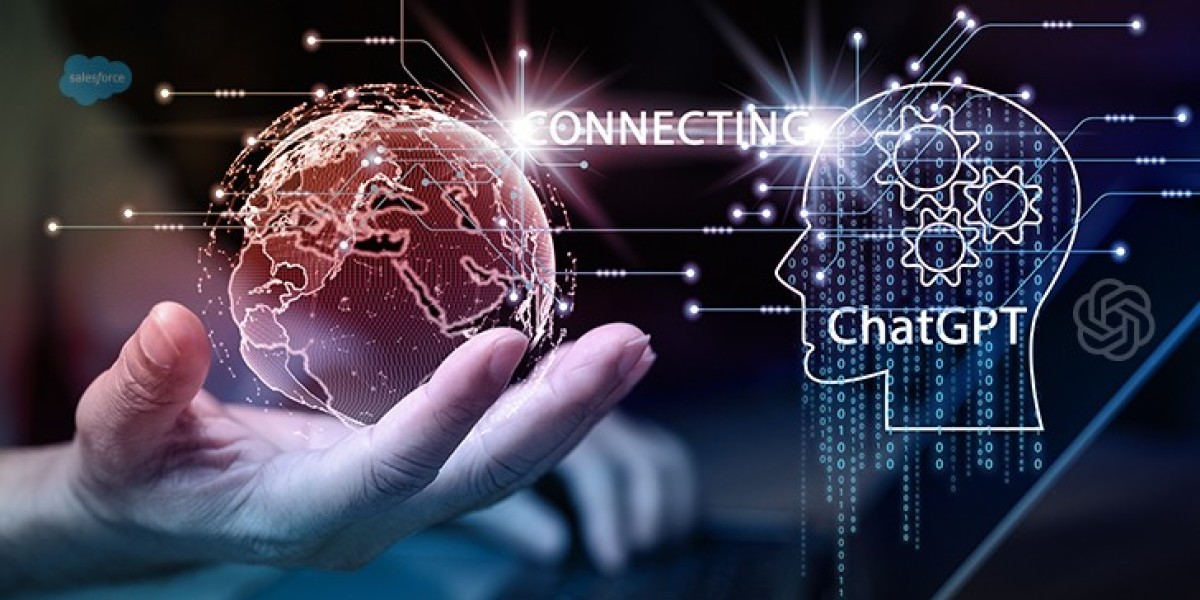Artificial intelligence (AI) has rapidly shifted from being a futuristic concept to a practical tool that drives real business results. Among the most versatile and widely adopted AI technologies today is ChatGPT, a powerful language model that can understand, generate, and interact with human-like text. Businesses across industries are now exploring ChatGPT integration solutions to automate tasks, streamline workflows, and deliver superior customer experiences.
This guide explores how ChatGPT can be integrated into business operations, the benefits it offers, real-world use cases, and practical steps for successful implementation.
Why Businesses Are Turning to ChatGPT
The digital transformation of businesses has accelerated dramatically in recent years. Customers expect personalized, fast, and seamless interactions with companies, while internal teams face pressure to do more with fewer resources. Traditional automation tools often fall short because they cannot handle natural conversations or adapt quickly to new situations.
This is where ChatGPT comes in. By using advanced natural language processing (NLP), ChatGPT understands queries, generates meaningful responses, and learns from interactions over time. When embedded into workflows, it becomes more than just a chatbot—it’s a productivity partner capable of supporting employees and delighting customers.
What Are ChatGPT Integration Solutions?
ChatGPT integration solutions refer to the various ways businesses can embed the capabilities of ChatGPT into their existing systems, platforms, or customer-facing applications. These solutions can be customized to serve different goals, such as automating repetitive tasks, providing intelligent customer support, or generating content.
Some of the most common integration methods include:
API Integration
Businesses can connect ChatGPT via APIs to their existing applications, such as CRM systems, helpdesk tools, or websites. This enables seamless interactions between ChatGPT and the company’s data sources.Custom Chatbots
Companies can build AI-powered chatbots for customer service, sales, or HR that leverage ChatGPT’s conversational abilities to answer queries, guide users, or handle routine processes.Workplace Automation
ChatGPT can be integrated with internal collaboration platforms like Slack, Microsoft Teams, or project management tools to assist employees with reminders, data lookups, and task automation.Industry-Specific Applications
With customization, ChatGPT can serve unique roles such as drafting legal documents, assisting doctors with medical notes, or helping teachers with lesson planning.
Key Benefits of ChatGPT Integration Solutions
Adopting ChatGPT integration solutions can transform business operations in meaningful ways. Here are some of the most significant benefits:
1. Enhanced Customer Experience
Customers want fast, accurate, and empathetic support. ChatGPT enables businesses to offer 24/7 assistance, resolve simple queries instantly, and escalate complex issues to human agents when necessary.
2. Cost Reduction
By automating repetitive tasks and handling common customer questions, businesses reduce the need for large support teams. This leads to lower labor costs without compromising quality.
3. Productivity Boost
Employees spend less time on routine administrative tasks and more time on creative or strategic work. For example, ChatGPT can draft emails, generate reports, or summarize meeting notes in seconds.
4. Scalability
Unlike human staff, AI systems can handle thousands of interactions simultaneously. Businesses can easily scale support or content generation without worrying about hiring constraints.
5. Improved Data Insights
ChatGPT can be integrated with analytics tools to gather insights from customer interactions, helping businesses understand user behavior and identify improvement areas.
Use Cases of ChatGPT Integration Solutions
Different industries can leverage ChatGPT in unique ways. Below are some common and impactful use cases:
1. Customer Support Automation
Retailers, banks, and service providers use ChatGPT chatbots to handle FAQs, track orders, and troubleshoot issues. For instance, an e-commerce business can integrate ChatGPT into its website to assist shoppers with product details and return policies.
2. Sales and Lead Generation
ChatGPT can qualify leads by asking pre-screening questions, providing product recommendations, and scheduling sales calls. This streamlines the sales funnel and improves conversion rates.
3. Marketing Content Creation
From drafting blog posts and ad copies to generating social media updates, ChatGPT assists marketing teams by providing fresh content ideas and reducing time spent on manual writing.
4. HR and Employee Support
Companies use ChatGPT internally to answer employee queries about policies, payroll, or benefits. It also helps in screening resumes or drafting job descriptions, saving HR teams hours of manual effort.
5. Education and Training
Educational institutions integrate ChatGPT to create interactive learning experiences, answer student queries, and even provide tutoring in specific subjects.
6. Healthcare Applications
In healthcare, ChatGPT supports doctors by generating patient notes, summarizing medical histories, or offering preliminary guidance to patients before they meet professionals.
Steps to Implement ChatGPT Integration
Successfully adopting ChatGPT integration solutions requires planning, customization, and monitoring. Here’s a step-by-step approach businesses can follow:
Step 1: Define Goals
Clarify what you want to achieve—better customer service, internal task automation, or content generation. Setting clear goals ensures alignment with business objectives.
Step 2: Choose the Right Integration Approach
Decide whether to use APIs, custom-built chatbots, or third-party platforms. The choice depends on technical resources and the complexity of requirements.
Step 3: Train and Customize
Fine-tune ChatGPT with company-specific data to ensure it reflects the brand’s voice and understands domain-specific terminology. For example, a legal firm should customize responses to align with its practice areas.
Step 4: Test Thoroughly
Before rolling out, conduct extensive testing with real-world scenarios to ensure accuracy, compliance, and user satisfaction.
Step 5: Monitor and Improve
AI systems improve over time with feedback. Regularly monitor interactions, analyze performance metrics, and make necessary adjustments for better results.
Challenges and Considerations
While the benefits are significant, businesses should also be aware of potential challenges:
Data Privacy and Security
Handling sensitive customer or business data requires strict compliance with regulations like GDPR or HIPAA. Integration must ensure secure data handling.Bias and Accuracy
AI models can occasionally generate biased or incorrect responses. Businesses need continuous monitoring and human oversight to maintain trust.Employee Resistance
Some employees may fear job displacement due to automation. Clear communication and retraining programs are essential to encourage adoption.Customization Efforts
Out-of-the-box ChatGPT may not fully align with a business’s tone or industry. Ongoing customization is necessary to maximize value.
The Future of ChatGPT in Business
The evolution of ChatGPT and other AI technologies is set to redefine how companies operate. Future advancements are likely to bring:
Multimodal Capabilities: Beyond text, ChatGPT will handle voice, video, and image-based interactions.
Deeper System Integration: AI will connect seamlessly with ERP, CRM, and supply chain systems to provide end-to-end automation.
Smarter Decision Support: ChatGPT will not just provide answers but recommend actions based on predictive analytics.
Personalization at Scale: Businesses will deliver hyper-personalized experiences to millions of users simultaneously.
For forward-thinking organizations, adopting ChatGPT integration solutions now can create a competitive edge and future-proof operations.
Conclusion
ChatGPT integration solutions represent a transformative opportunity for businesses across industries. By embedding AI into customer service, sales, HR, marketing, and other functions, companies can achieve higher efficiency, lower costs, and enhanced customer satisfaction.
The path to successful integration requires careful planning, customization, and continuous improvement. Businesses that embrace ChatGPT not only meet today’s demands but also position themselves to thrive in the AI-driven future.








